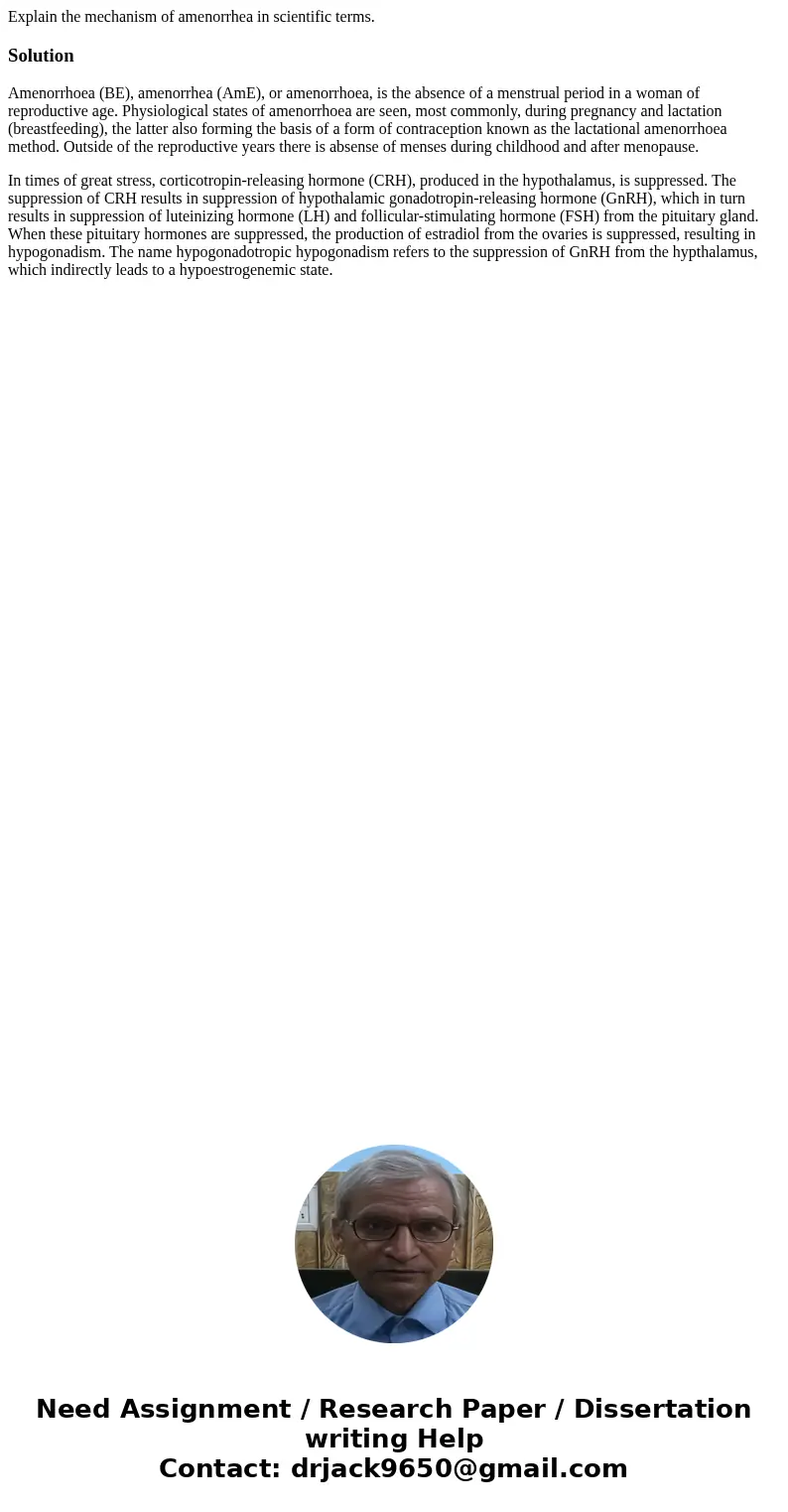Explain the mechanism of amenorrhea in scientific termsSolut
Explain the mechanism of amenorrhea in scientific terms.
Solution
Amenorrhoea (BE), amenorrhea (AmE), or amenorrhoea, is the absence of a menstrual period in a woman of reproductive age. Physiological states of amenorrhoea are seen, most commonly, during pregnancy and lactation (breastfeeding), the latter also forming the basis of a form of contraception known as the lactational amenorrhoea method. Outside of the reproductive years there is absense of menses during childhood and after menopause.
In times of great stress, corticotropin-releasing hormone (CRH), produced in the hypothalamus, is suppressed. The suppression of CRH results in suppression of hypothalamic gonadotropin-releasing hormone (GnRH), which in turn results in suppression of luteinizing hormone (LH) and follicular-stimulating hormone (FSH) from the pituitary gland. When these pituitary hormones are suppressed, the production of estradiol from the ovaries is suppressed, resulting in hypogonadism. The name hypogonadotropic hypogonadism refers to the suppression of GnRH from the hypthalamus, which indirectly leads to a hypoestrogenemic state.

 Homework Sourse
Homework Sourse